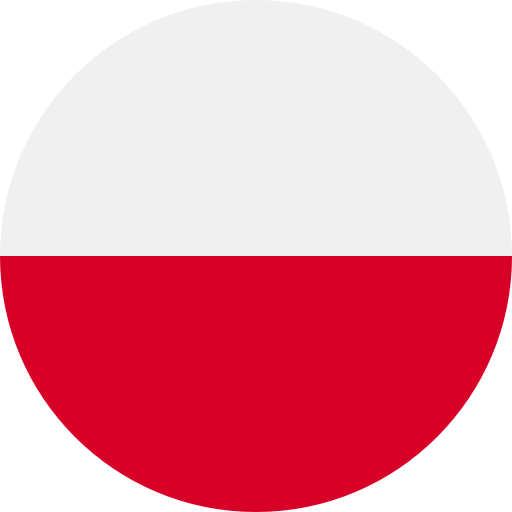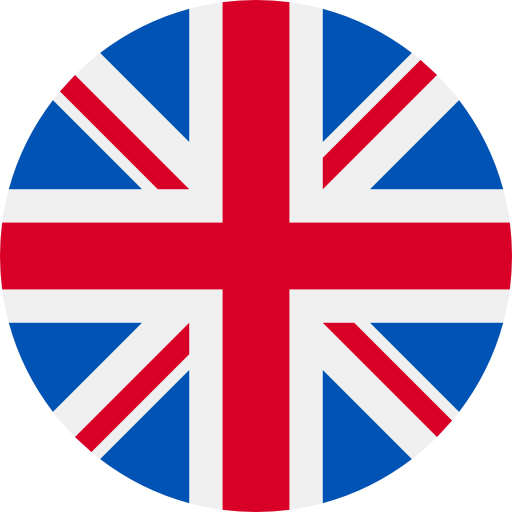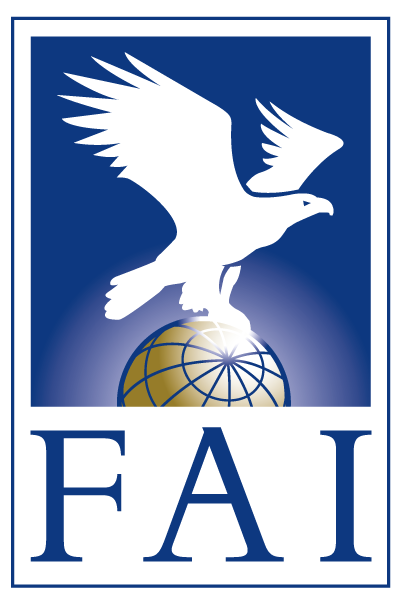27th Coupe Aéronautique Gordon Bennett
Paris, France, July 1, 1983
Results
| Rank | Pilots | Country | Score | Duration | Landing |
|---|---|---|---|---|---|
| 1 | Stefan Makne Ireneuz Cieslak |  POL POL | 690.00 km | 36:00:00 | Regensburg (GER) |
| 2 | Dean Stellas Robert Snow |  USA USA | 525.40 km | 00:00:00 | Öhringen (GER) |
| 3 | Rolf Gross Peter Peterka |  SUI SUI | 347.20 km | 00:00:00 | Sarreguemines (FRA) |
| 4 | Bernard Rice Robert C. Penney |  USA USA | 278.00 km | 00:00:00 | Nancy (FRA) |
| 5 | Xavier Forest Gilles de Mareuil |  FRA FRA | 222.50 km | 00:00:00 | Verdun (FRA) |
| 6 | Jean M. Crombez ? |  FRA FRA | 171.10 km | 00:00:00 | St.Memehuld (FRA) |
| 7 | Franz-Josef Schellhove Helma Sjuts |  GER GER | 118.40 km | 00:00:00 | Epernay (FRA) |
| 8 | Nini Boesman Gerrit Visscher |  NED NED | 69.40 km | 00:00:00 | Orly (FRA) |
| 9 | Saburo Ichyoshi Hiro Takamoto |  JPN JPN | 60.90 km | 00:00:00 | Doue (FRA) |
| 10 | Jonathan Harris Nick Bosanquet |  GBR GBR | 58.00 km | 00:00:00 | Laudray (FRA) |
| 11 | Jojo Maes Gottlieb Blenk |  GER GER | 17.00 km | 02:09:00 | Gagny (FRA) |
Book Article
From the Book: Die Gordon Bennett Ballon Rennen
(The Gordon Bennett Races) by Ulrich Hohmann Sr
Start: Paris, France , June 25th
REVIVAL AFTER A LONG BREAK
Like Snow White in her crystal coffin the wish for a revival of the Gordon Bennett Races was sleeping for 45 years. Almost nobody really believed, that these races could ever be put back to life again. All thought, they were definitively dead. Even in the book "Lighter than air", published 1988, we find the sentence: "World War II put an end to the Gordon Bennett Races". Author Dieter Zimmerling had not realized, that the 6th race after the Second World War was already fixed to be launched from Bregenz/Austria in October.
Thoughts for a resurrection were really far away. Too much had changed in aviation, air sports and the political situation. Under these circumstances, these giant balls, impossible to steer, should swim day and night in the air? Who flew for vacation to far away beaches prior to 1939? With good old DC-3 or "Auntie Ju"? Forty Five years later, flying for a vacation was absolutely normal. Airlines transported millions of people every year. It became busy in the sky. And the space, not used by commercial aviation, was captured by the military.
Also, the number of the private pilots had increased. Of course, some motor and glider planes had been there prior to 1939, but now, owning such a tool was almost normal, at least everybody interested could charter such a plane from a club. And the balloonists? Ballooning was increasing around the whole world, but it was a completely different balloon. The hot air balloon, made from nylon fabric, flew with propane as source of energy, but normally for not more than two hours. Gas balloons? Did they still exist? Wasn’t there this horrible accident of airship HINDENBURG in 1937, filled with the explosive hydrogen, made by the devil? This stuff, should not be used on an aircraft! But gas balloons still existed. Not as many as in 1914 or 1930, but in Germany at least 60, in Switzerland 30 and in the rest of the world another 30. And they flew, over the region that was left for them after the war, if not used for other purpose, 200 kilometres from the west to the east, 1000 kilometres from the north to the south in Germany.
The other purpose? Relicts of war. Soon after the end of World War II two enemy blocks formed, accusing each other of trying to rule the world. The frontier went through the middle of Germany. Along it, and also farther away in the backcountry, military forces faced each other. In the backcountry they trained and trained. And in between a balloon, drifting peacefully – an absurd situation. They shot and did attack training with jet-fighters howling with ear splitting noise at supersonic speed across the landscape. No, a balloon would only disturb this, so away with it from these areas.
Also, nobody could imagine, that the "iron curtain", as Churchill had once named the frontier, would be opened especially for gas balloons. This had worked much easier and better after World War I. No, almost nobody thought of a Gordon Bennett Race.
The Royal Belgium Aero Club however tried it for the world exhibition "EXPO 1954". The race would be launched in Brussels on September, 21st. But the plan was given up soon. It was impossible to meet the restrictions, made by air traffic control and other authorities. Some other discussions about a revival of the Gordon Bennett Races were held at FAI meetings during the 1960's, but they also failed.
Ballooning in the Federal Republic of Germany was permitted again by the allies in 1951. Old Gordon Bennett competitor Ferdinand Eimermacher, had set up the roots for it by flying with Dutch Jan Boesman on October 29th, 1950. The permission of course contained restrictions: No flights at night, no flights across the borders. But at least, it was allowed to fly. When the restrictions fell in 1957, soon glamorous flights happened. Dr. Ernst Frank (son of Gordon Bennett competitor of 1936) flew with his brother-in-law, Fritz Braun in 12:17 hours 835 kilometres from Augsburg to the coast of the Atlantic on January 18th, 1957. He was followed by Bruno Potthast and Alfred Eckert with 15:34 hours and 984 kilometres on May 26th, 1957. They also managed the first traversing of the Alps on November 30th, 1957. Rudi Reilich and Werner Riedel flew 24:01 hours from Augsburg to Kiel in 1969, Heinz Brachtendorf and Helmut Karnstädt managed another traversing of the Alps from Marl in Westphalia and Willi Eimers flew a balloon to Norway. But all of this had been single achievements, not done in a competition. A competition is something completely different. In a competition, it is important, for all those involved to fly at the same time and in the same conditions. If then a flight of more than 1000 kilometres comes out, it’s good. But for a winner in a competition, the longest flight is important, even if it is just 100 meters longer than the flights of the others. So Gordon Bennett seemed not to be achievable, the pilots met to hold European and World Championships. But it proved, that the kinds of competition, taken from hot air ballooning, were not perfect for gas balloons. Flying to a target, 30 to 70 kilometres away, was in no relation to the work and expenses for an inflation.
The year 1983 came, and with it the 200th anniversary of ballooning. France had the right of first choice and from there came an invitation:
"In connection with the memorial celebrations of the 200th anniversary of the first human balloon flight, the AERO CLUB DE FRANCE will organize a COUPE CHALLENGE GORDON BENNETT to be launched from the Place de la Concorde in the centre of Paris on June 25th, 1983. Nomination for the GORDON-BENNETT is limited to two balloons per nation and must be done by the national aero club to the AERO CLUB DE FRANCE. Besides the COUPE GORDON BENNETT will be held a COUPE CHARLES ET ROBERT without limitation of competitors, but the same rules. For this, interested pilots may sign up directly at the AERO CLUB DE FRANCE.
A Gordon Bennett Race after a break of 45 years? How would balloonists and the national aero clubs react? Would "the best of the world" register, as Gordon Bennett had requested it in his rules?
Obviously, the revival of the Gordon Bennett Race was not taken so serious. The limitation to two balloons did not fit the rules, and the substitute COUPE CHARLES ET ROBERT was designed to replace good old GORDON BENNETT in the following years. It turned out completely different!
Also the balloons, that were inflated on the Place de la Concorde were completely different. Until 1938 one flew with balloons, containing 2200 cubic meters of coal-gas. Coal gas (or town-gas) was made from hard coal in gas factories in almost every town, stored in huge gas tanks and was used for heating, cooking and often also for illuminating the streets. This procedure meanwhile had become old fashioned. At places, where they still heated and cooked with gas, natural gas came in use. But natural gas is much heavier than coal gas, and therefore of no use for inflating a balloon. The balloons were now filled with hydrogen, in some countries also with helium. Hydrogen and helium are the lightest gases (the difference in weight between them is small and of no interest here), one cubic meter of them can lift up to 1.2 kilograms, with coal gas, the maximum lift was at about 0.6 to 0.7 kilograms. So now the same lift was achieved with much smaller balloons. Looking ahead a little: In the following races, the FAI had limited the size of the balloons to 1050 cubic meters.
Also inside the baskets a lot had changed. We know from the old reports, that navigation was a big problem. Compass, binoculars, a watch and a sextant were the tools for navigation. If they did not help, the crews had to shout down to people on the ground in the hope, that they will shout back their position.
Now, radios had become a must. With their help, an air traffic controller could ask the balloon for his altitude, position and intentions. Talking to at least two stations, the pilot was able, to determine his position very exactly by a simple cross bearing. Also other navigational aids had been installed, directed and undirected radio beacons, radar and secondary radar allowed an exact determination of position, speed and altitude. Without these instruments, air traffic like today would be impossible. For the balloons, the instruments itself were the smaller problem, the bigger problem was to provide these tools with sufficient energy. In an airplane, they get their electricity from the motor, but at a balloon, batteries are necessary, which were quite heavy at the beginning, thus claiming some part of the lifting power.
Both races, scheduled at the same time, the Coupe Gordon Bennett and the one for Charles et Robert, were not very lucky. The Place de la Concorde was a wonderful location and thousands of spectators had come. The whole airspace over Paris was kept free for the time of the launch, but then a heavy thunderstorm approached. Some of the 18 balloons in both races started before the first flash, the rest after the thunderstorm was over. So conditions were not equal for all. In the COUPE CHARLES ET ROBERT, Americans Maxie L. Anderson (first man who crossed the Atlantic in a balloon with his crew on August 12th, 1978) and Don Ida (failed to circle the world in a balloon together with Maxie Anderson in 1981) had launched in front of the thunderstorm. The speedy wind from the west drove them to Northern Bavaria towards the frontier to Czechoslovakia. They had to landed before it. In a forest clearance near the village of Schönderling in the county of Bad Kissingen they tried it and lost their lives. CHARLES ET ROBERT (constructors of the first gas balloon) had earned a bitter honour. This cup was never competed for again.
Stefan Makne and Ireneuz Cieslak in the Gordon Bennett Race flew to Regensburg, 690 kilometres in 36 hours, continuing the success of their fellow citizens Antoni Janusz und Franziscek Janik from 1938, almost in the same time (37 hours 47 min.) but 1000 kilometres less. Poland had won the 27th race, the fifth victory in total and already the second one in a row. Only the USA had until then managed the final possession of two cups, if Poland would win the next race, it would equalize it. But would there be another race? Wasn’t it revived only once because of the 200 years anniversary?
Two other names should be mentioned at this races in 1983: Jean Marie Crombez, flying for France in the Gordon Bennett Cup and Werner Lohmann, flying for Germany in the Coupe Charles et Robert. Crombez already flew in the races of 1937 and 1938, Lohmann in the races of 1935, 1936 and 1937. These two old tigers build a human bridge across the decades to the new races.

